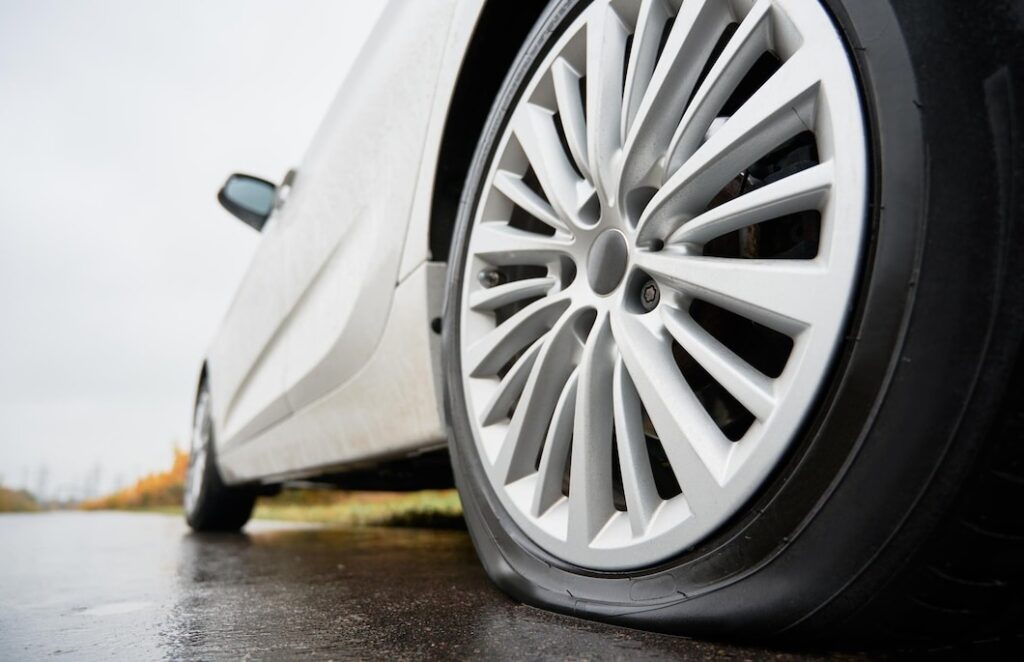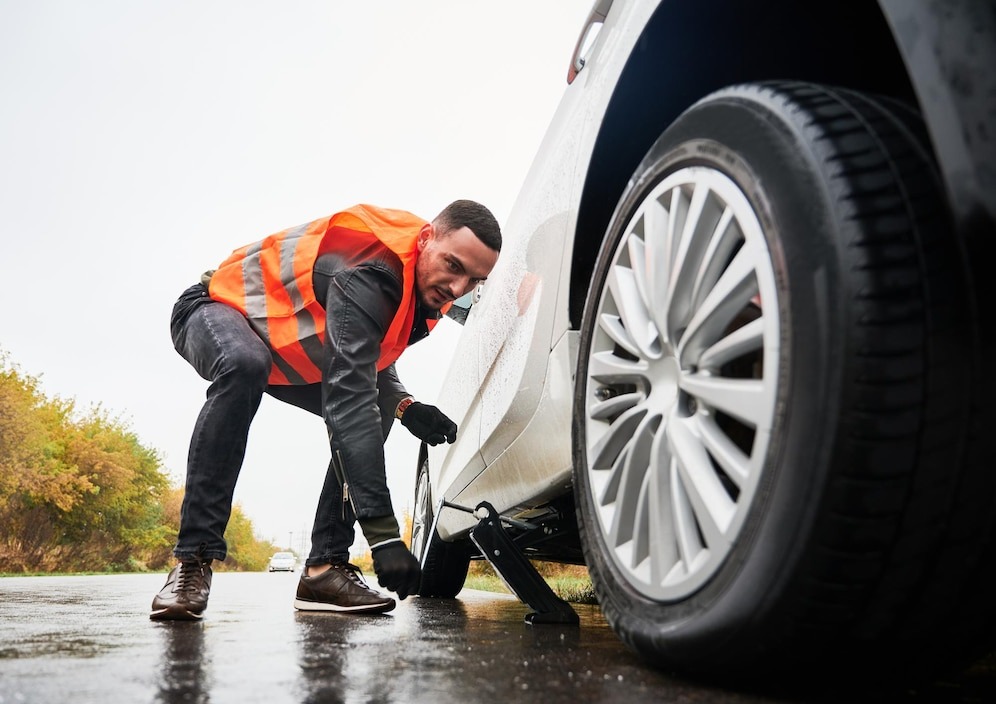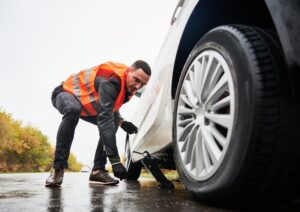A tire blowout refers to the rapid loss of air pressure in a tire causing it to burst or deflate. Encountering a tire blowout while driving can be both dangerous and frightening as it can impact the stability, maneuverability and braking capabilities of your vehicle. Moreover a tire blowout has the potential to inflict damage upon your vehicle’s rim, wheel or suspension.
There are factors that can contribute to a tire blowout occurrence. These include tire pressure overloading the vehicle beyond its capacity punctures or cuts on the tires impacts from road hazards or excessive wear over time. Additionally high temperatures, driving at speeds or encountering poor road conditions can also increase the likelihood of experiencing a tire blowout.
To minimize the risk of a tire blowout happening unexpectedly or reducing its severity if it does occur; it is crucial to maintain tire care practices. Regularly checking and maintaining tire pressure levels is essential. Additionally periodic rotation of tires helps ensure wear distribution across all tires. It’s important to replace worn out or damaged tires and avoid overloading your vehicle as well as driving on rough roads whenever possible.
Diligent one may be with regards to proper maintenance practices; unforeseen circumstances may still lead to an unexpected tire blowout occurrence. Therefore it is essential to familiarize oneself with actions, in case of a tire blowout incident; this knowledge will help you avoid panic situations and mitigate potential accidents on the road.
What To Do During a Tire Blowout

If you experience a tire blowout while driving, follow these steps:
- Stay calm: Don’t panic or overreact. Take a deep breath and focus on controlling your vehicle.
- Hold the steering wheel firmly: Don’t let go of the steering wheel or jerk it sharply. Keep your hands at 10 and 2 o’clock positions and steer straight ahead.
- Ease off the gas pedal: Don’t slam on the brakes or accelerate. Gradually release the gas pedal and let your vehicle slow down naturally.
- Turn on your hazard lights: Signal to other drivers that you have a problem and that you need to pull over.
- Pull over safely: Look for a safe and flat spot to stop your vehicle, such as the shoulder or the emergency lane. Avoid stopping on curves, hills, bridges, or busy traffic areas. Use your turn signals and check your mirrors before changing lanes.
- Stop completely: Apply the brakes gently and steadily until your vehicle comes to a complete stop. Put your vehicle in park or neutral and engage the parking brake. Turn off the engine and get out of the vehicle carefully.
What To Do After a Tire Blowout
Once you have safely stopped your vehicle after a tire blowout, follow these steps:
- Assess the damage: Check which tire has blown out and how severe the damage is. Look for any signs of fire, smoke, or leaking fluids. If you see any of these hazards, move away from the vehicle and call for help.
- Change the tire: If you happen to possess a tire along with the necessary tools required for its replacement you may attempt to change the punctured tire on your own. Ensure that you are positioned in a spot away from any vehicular movement and that there is ample space available for carrying out the task. Refer to the instructions provided in your vehicle’s owners manual. Consult an online guide to ensure a safe and accurate tire replacement procedure.
- Call for help:If you find yourself without a tire lacking the tools for replacement or feeling uncertain about performing the task independently it would be advisable to contact roadside assistance or a reputable towing agency. Alternatively reaching out to friends or family members for assistance could also be an option. Ensure that you clearly communicate your predicament, share your location and patiently await the arrival of aid.
- Inspect the other tires: While waiting for help, you can also inspect your other tires for any signs of damage or wear. Check their pressure and tread depth and look for any cracks, bulges, or nails. If you find any problems with your other tires, report them to the mechanic or the tow truck driver.
Conclusion
A tire blowout is when a tire suddenly and rapidly loses air pressure causing it to burst or deflate. It can be a frightening situation on the road that affects how your vehicle handles, brakes and maintains stability.
To prevent or decrease the chances of a tire blowout happening it’s important to maintain your tires. This includes checking their pressure, rotating them periodically, replacing them when they’re worn or damaged and avoiding overloading the vehicle or driving on rough roads.
However with diligent tire maintenance there’s still a possibility of an unexpected tire blowout occurring. That’s why it’s crucial to know what steps to take if you experience one in order to prevent accidents.
If you encounter a tire blowout while driving remember to remain composed and keep a grip on the steering wheel. Gradually release the gas pedal. Activate your hazard lights. Safely maneuver your vehicle off the road. After coming to a stop following a tire blowout incident assess the damage either change the tire yourself if possible or seek assistance by calling for help. Don’t forget to inspect the tires as well for any signs of damage.




